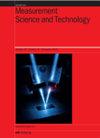基于多模型信息提取和融合的新型监测方法
IF 3.4
3区 工程技术
Q1 ENGINEERING, MULTIDISCIPLINARY
引用次数: 0
摘要
现代工业流程日益复杂,流程数据中通常同时存在多种特征。因此,传统的基于单一模型的监测方法可能会忽略其他数据特征,导致监测效果不佳。针对这一问题,本文提出了一种基于多模型信息提取和融合的新型监测方法。首先,采用多种方法从过程数据中提取不同的特征。例如,主成分分析法、独立成分分析法和慢特征分析法可分别用于提取高斯特征、非高斯特征和动态特征。其次,将从多个模型中提取的特征组合成新的潜在特征。然后,建立潜在特征与过程变量之间的拉索回归模型。这样,在重构过程中不仅可以考虑流程数据中的多个特征,还可以为每个流程变量选择关键潜在特征(KPF)。每个过程变量的 KPF 可以形成一个监测子空间,从而提高故障检测的灵敏度。此外,还可根据每个子空间的相似性使用聚类分析来减少监测子空间的冗余。通过融合最终确定的多个子空间和残差空间的监测结果,可以实现过程监测。对三个模拟过程和一个实际工业过程的案例研究证明了该方法的有效性和更好的性能。本文章由计算机程序翻译,如有差异,请以英文原文为准。
A novel monitoring method based on multi-model information extraction and fusion
Modern industrial processes are increasingly complex, where multiple characteristics usually coexist in process data. Therefore, traditional monitoring methods based on a single model may ignore other data characteristics and obtain poor monitoring performance. Aiming at this problem, a novel monitoring method based on multi-model information extraction and fusion is proposed in this paper. Firstly, several methods are used to extract different characteristics from process data. For example, principal component analysis, independent component analysis and slow features analysis can be used to extract Gaussian, non-Gaussian and dynamic characteristics respectively. Secondly, features extracted from multiple models are combined into new potential features. Then, Lasso regression models between potential features and process variables are established. In this way, not only are multiple characteristics in process data considered during the reconstruction, but key potential features (KPFs) can be selected for each process variable. The KPFs for each process variable can form a monitoring subspace to enhance the sensitivity for fault detection. Furthermore, cluster analysis is used to reduce the redundancy of monitoring subspaces based on the similarity of each subspace. Process monitoring can be achieved by fusing the monitoring results of finally determined multiple subspaces and residual space. Case studies on three simulation processes and a real industrial process demonstrate the effectiveness and better performance.
求助全文
通过发布文献求助,成功后即可免费获取论文全文。
去求助
来源期刊

Measurement Science and Technology
工程技术-工程:综合
CiteScore
4.30
自引率
16.70%
发文量
656
审稿时长
4.9 months
期刊介绍:
Measurement Science and Technology publishes articles on new measurement techniques and associated instrumentation. Papers that describe experiments must represent an advance in measurement science or measurement technique rather than the application of established experimental technique. Bearing in mind the multidisciplinary nature of the journal, authors must provide an introduction to their work that makes clear the novelty, significance, broader relevance of their work in a measurement context and relevance to the readership of Measurement Science and Technology. All submitted articles should contain consideration of the uncertainty, precision and/or accuracy of the measurements presented.
Subject coverage includes the theory, practice and application of measurement in physics, chemistry, engineering and the environmental and life sciences from inception to commercial exploitation. Publications in the journal should emphasize the novelty of reported methods, characterize them and demonstrate their performance using examples or applications.
 求助内容:
求助内容: 应助结果提醒方式:
应助结果提醒方式:


